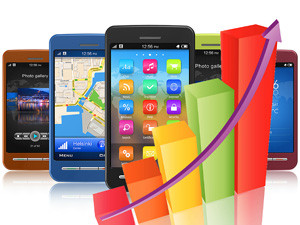
The latest data from ABI Research's Mobile Handset Markets Database indicates low-cost smartphones already accounted for 28% of all smartphone shipments in 2012.
According to ABI, segmentation within the smartphone sector is increasing to three price tiers (low, mid, and high) and it expects shipments of sub-$250 low-cost smartphones to grow from 259 million in 2013, to 788 million in 2018. Mid- (sub-$400) and high- ($400+) cost smartphone shipments are expected to grow from 635 million to 925 million over the same period.
Senior ABI analyst Michael Morgan says the growth of smartphones in prepaid and emerging markets will be the primary driver of low-cost smartphone growth. "As the feature phone segment continues to lose its battle for relevance, the low-cost smartphone has become the tool for operators seeking to drive increased data revenues."
In the last quarter of 2012, the International Data Corporation (IDC) quarterly mobile phone tracker showed the lower-cost smartphones are finding their footing in the market.
Senior IDC research analyst Kevin Restivo says vendors focusing on lower-cost devices can rapidly gain market share, especially in emerging markets. "A good example is Huawei, which overtook LG as a top five vendor in the overall mobile phone market and passed HTC to become a top five smartphone vendor."
He adds that smartphone market leaders Samsung and Apple are both under increasing pressure as the low-cost smartphone starts to gain momentum.
The premium smartphone will still have its appeal, but this places pressure on operators to ensure they deliver an advanced network and wireless experience for the consumer, adds senior practice director at ABI, Jeff Orr.
"As smartphone penetration moves from early adopters to mass-market and laggard consumer segments, the smartphone as a product will be less dependent on technical superiority, and more dependent on reliability and value."
Local appeal
Manufacturers have already started servicing the low-cost smartphone market, with Sansui, which is not known as a cellular vendor, offering a 1GHz smartphone with Android 4.0, for just R1 999, as offered by HiFi Corporation. Chinese manufacturer, Huawei's Ascend W1 Windows 8 smartphone has a 1.2GHz processor and falls in just under the R3 000 price mark.
Samsung's entry-level Android smartphone, the Galaxy S3 Mini, which has similar specifications, retails closer to the region of R 4 000.
World Wide Worx MD Arthur Goldstuck says the local feature phone market is set to shrink dramatically over the next two to three years. "We will see a dramatic drop in the price of the entry-level smartphones in the next two years as there is a growing demand for simpler phones."
In this regard, he believes Samsung has already distinguished itself as the market leader in the low-cost smartphone category. "The Galaxy Pocket offers the Android experience at a fraction of the cost of premium smartphones."
He adds that it remains to be seen whether South Africans will catch on to the lesser known brands.
Share